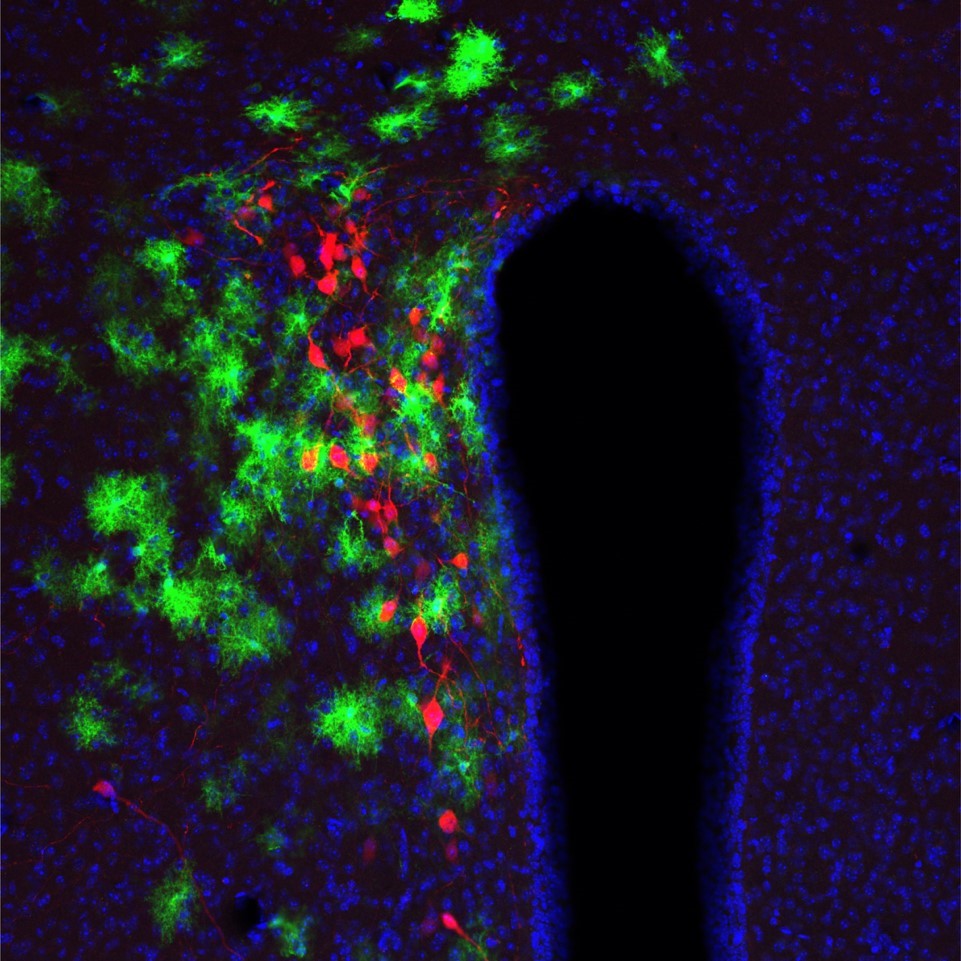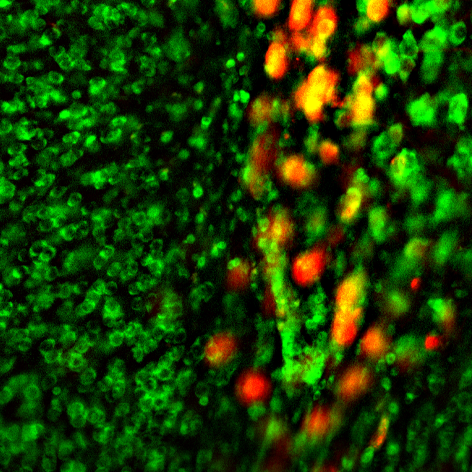Cognition and Behavior
Exploring how oscillatory and non-oscillatory components of neural activity shape perception and enable multisensory integration and can lead to the McGurk illusion.
Andy Kim describes how his passion for studying cognition came about and encourages scientists to consider preregistering their studies as he details his own positive experiences with the process.
Real-time calcium dynamics of astrocytes and oxytocin neurons in the mouse paraventricular nucleus of the hypothalamus.
New behavioral method may improve understanding of complex working memory in nonhuman primates.
Coronal section of a mouse nucleus accumbens with GABAergic neurons ablated.
Kamilla Haugland shares how her passion for research, love of learning, and work ethic helped her overcome difficult challenges—including multiple lab closures—as she pursues her dream of leading her own research group.
Looking back at ten years of eNeuro papers, this post features two papers published in 2020.
Dr. Samantha White details how her academic trajectory, though challenging on both technical and personal levels, has ultimately fostered her passion for neuroscience research and led her to pursue an academic career.
Looking back at ten years of eNeuro papers, this post features two papers published in 2018.
Prelimbic and infralimbic cortices balance their activity to regulate safety learning during a novel behavioral task that uses ethologically-relevant stimuli.
FOLLOW US
TAGS
CATEGORIES







 RSS Feed
RSS Feed




